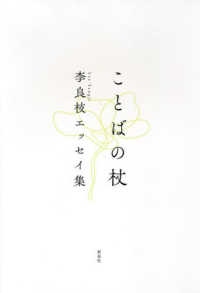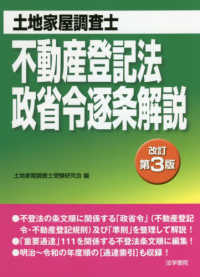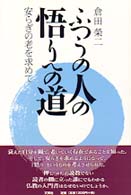- ホーム
- > 洋書
- > 英文書
- > Science / Mathematics
Full Description
Historical folklore indicates that Asldepios (circa 900 BC), the fIrst western doctor of ancient Greece, treated many patients with rheumatic diseases of 1 joints ,2. Later, Hippocrates (circa 400 BC), who claimed to have learned from Asklepios, used the term arthritis in reference to joint diseases: "When the disease of arthritis strikes, acute inflammation and pain attacks the joints of the body ... ". Indeed, arthritic joint disease dates much farther back into antiquity than Asklepios. Many modern anthropologists have noted degenerative joint disease in the fossils of Neanderthal man (archanthropus europeus petraloniensis) and even in those of dinosaurs. More recent scientific studies on joints date back to the work of the great English anatomist Hunter who wrote "The Structure and Diseases of Articular Cartilage" in the Philosophical Transactions of London in 1743. The notion that osteoarthritis results from the wearing away of cartilage was copiously documented by the histological observations of the German physician Ecker in 1843. This idea was further supported by Pommer (1927) who felt that mechanical stresses played important roles in the initiation and propagation of cartilage lesions leading to osteoarthritis. This same conclusion was reached by the assembled distinguished experts at a National Institutes of Health Workshop 3 held in 1986 .
Contents
III Bone Biomechanics.- 17. Function and Form of Bone.- 18. Multiaxial Structure-Property Relations in Trabecular Bone.- 19. The Mechanical and Remodeling Properties of Trabecular Bone.- 20. Age-Related Loss of Vertebral Trabecular Bone Mass and Structure — Biomechanical Consequences.- 21. Biologic Modulation of Mechanical Influences in Bone Remodeling.- 22. Properties of Cortical Bone and Theory of Bone Remodeling.- 23. Mechanical Stresses in Joint Morphogenesis and Maintenance.- 24. Streaming Potential in Bone.- IV Joint Biomechanics.- 25. Kinematics and Mechanics of the Cruciate Ligaments of the Knee.- 26. Stereophotogrammetric Determination of Joint Anatomy and Contact Areas.- 27. The Relationship Between Knee Motion and Articular Surface Geometry.- 28. Viscoelastic Behaviour of Synovial Fluids and Artificial Replacements.- 29. Bio-Tribology of Natural and Replacement Synovial Joints.- 30. Squeeze Film Lubrication for Articular Cartilage with Synovial Fluid.- 31. Joint Physiology and Biomechanics.- 32. Finite Element Analysis of Bones and Joints: Some Applications to Femoral Head Osteonecrosis.- 33. Kinematics of Human Shoulder Motion.- 34. Biomechanics of the Elbow.








